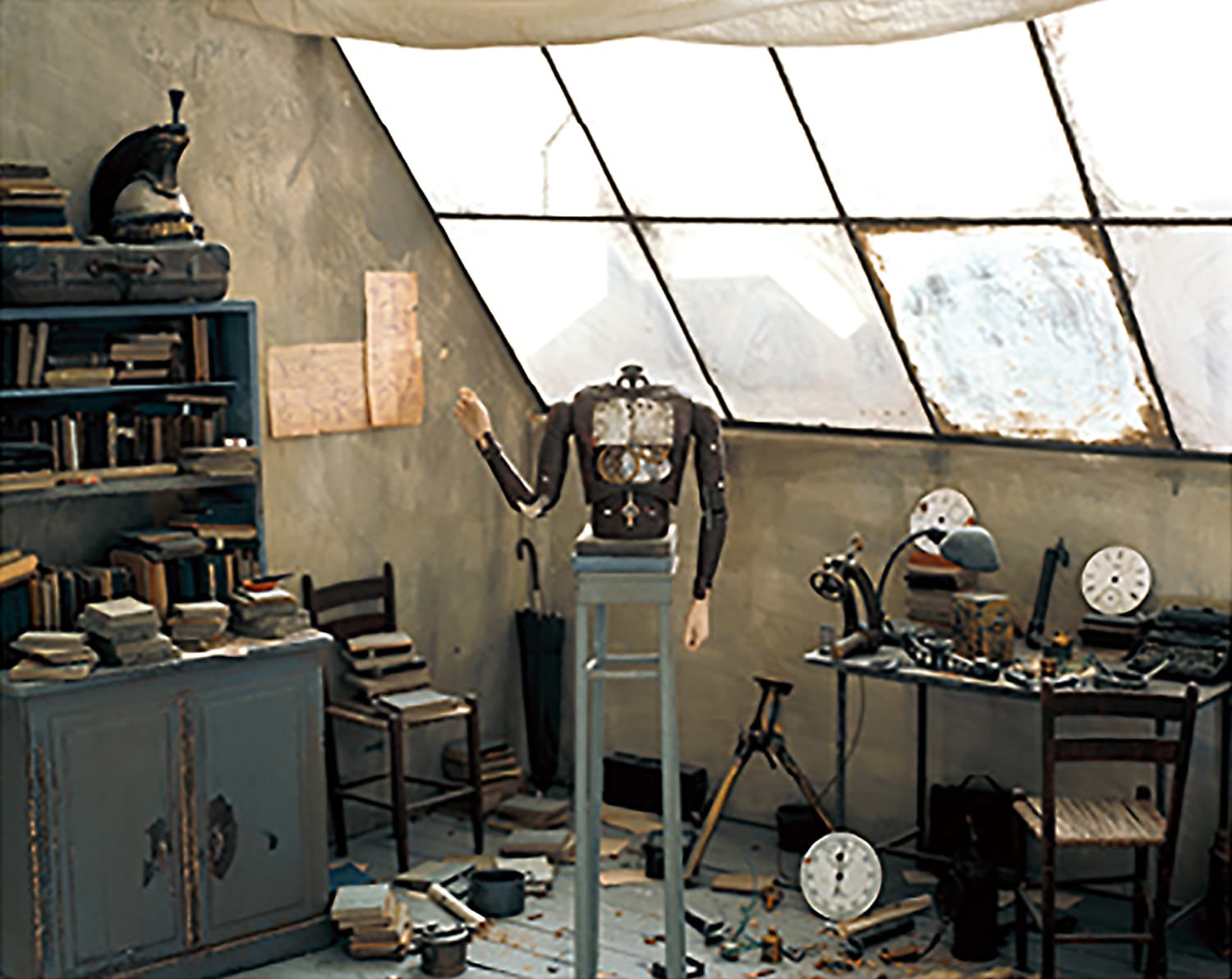Paolo Ventura: L'automa
Gallery Baton will be featuring the first solo exhibition of Paolo Ventura in Korea, an Italian artist who has been building his worldwide reputation for his unique world of photography. The solo exhibition will showcase Automaton, a new theme started in 2010 following Winter Stories (2007-2008) which brought Ventura critical acclaim and international recognition.
Ventura’s new work Automaton (Original title: L’automa) is set in a Jewish ghetto located in Venice during World War II when imperialistic ambitions and madness was coming to an end. Each photo is set against the backdrop of Venice that is blanketed by a light fog, symbolizing the desolateness of the residential area occupied by Jews who for political reasons, were subject to discrimination and threats. Each of his photos take us to the old village of Venice transcending space and time as if they were a documentary film taken by a war correspondent: a man staring at a street side bookstore that was erectly in a hurried manner, a man and a woman waiting for a gondola with their back toward a wall, an deserted theater that once could have been crowded with local people, and a man looking dangerously down from the roof.
Automaton, which is the title of the artworks and the theme that underlies the series, was inspired by a story that Ventura’s father told him when he was a child. His father piqued his young son’s curiosity with a story of an imaginary old watchmaker who lived in a ghetto in Venice. The distant memory of his father combined with the story that remained embedded in Ventura’s memory for years has culminated in Ventura’s artwork that is almost real even as a fictional representation.
“In a ghetto in Venice 1943, where Jews living in hiding were taken away one by one, there is an oldwatchmaker who lives there to the end, filled with loneliness and insecurity. He is without work for a person whose lifetime job was a watch repairman; he is without family or relatives who he used to have dinner with and rely on. He tries to pass the weary time and loneliness, if only for a second, by making a ‘boy doll’ (Automaton). The ‘boy’ that is created by the old watchmaker’s years of repair experience has a shoddy exterior but becomes a good friend of the old man by sitting around the table and shouting ‘cheers’ with his hand raised high at 6:30 every evening.” (Omission)
The series of photos in Automaton describes the last images of the Jewish Ghetto seen through the eyes of the old watchmaker where he has lived all his life. Perhaps it is the strong impression and intensity of the scenes from Steven Spielberg’s Schindler’s List (1993) that Ventura’s photos are not unfamiliar to us in the present day.
Surprisingly, Ventura creates the final photo all from dioramas that he makes himself, much like an opera director would. Although his father’s story is the common motif, the presence of the sites he has created is based on his imagination. Each photo undergoes a long process of imagination, sketch, meticulously constructed diorama, decision of the angle and composition made after reviewing multiple polaroid shots, and the final shoot. The sets and props in each photo are so detailed that one could easily believe that they were documentary pictures of an actual time and place. One may humbly compare Ventura to director Alfred Hitchcock (1899-1980) who sought perfection with every single prop.
Ventura’s recent works War Souvenir, Winter Stories and his most recent Automaton share the commonalities of social, time, and space of Italy during World War II. His photos are a representation of reality based on motifs from historical facts and an old story. It presents a question of how a created reality interacts and challenges our thinking process.
“I use photography because what you see in photography you believe is real - even if you know it is a model. Like when you go to see a film—it’s a set up, but you cry, you get excited, you are deeply touched. People want to believe what they see on film”. — Paolo Ventura
